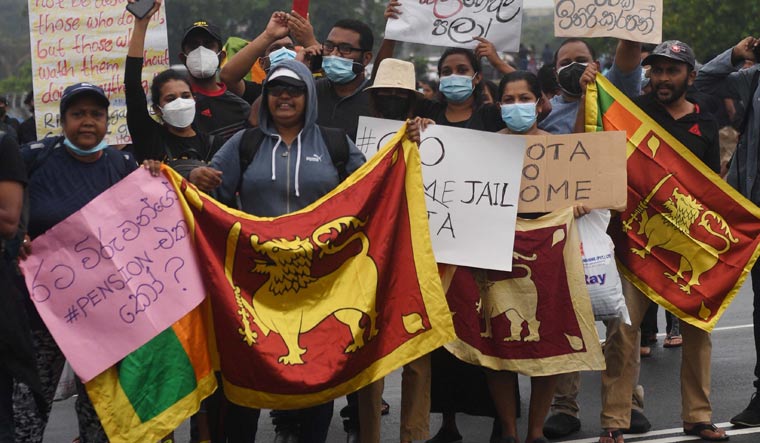In a bid to avoid hard default, Sri Lanka decided to default on all its external debts. The country will be temporarily suspending its $51 billion foreign debts ahead of its talks with the International Monetary Fund (IMF).
The country’s finance ministry, in a statement, announced this, saying all its creditors are free to capitalise any interest payments due to them or opt for payback in Sri Lankan rupees.
“Sri Lanka has decided to suspend normal debt servicing of all affected debts for an interim period pending an orderly and consensual restructuring of those obligations in a manner consistent with an economic adjustment programme supported by the IMF," the ministry announced on Tuesday in a memorandum titled 'Interim policy regarding the servicing of Sri lanka’s external debts'.
The four-page memorandum, while giving details on the background of the debts, the interim external public debt servicing policy, the affected debts and the government undertakings, said, “The holders of all affected debts are being requested to capitalise any amounts of principal or interest falling due during this interim period at an interest rate not higher than the normal contractual rate applicable to that credit, until a restructuring proposal can be presented to the creditors for their consideration.” The rating agencies had earlier warned of a potential default on its $51 billion foreign debt.
The country decided to approach the IMF, requesting help to come out of the crisis. Sri Lanka's new Finance Minister Ali Sabry, along with the newly-appointed Central Bank of Sri Lanka governor Dr P Nandalal Weersinghe, will hold the negotiations with IMF on April 18.
“Late last month, IMF assessed Sri Lanka’s debt stock as unsustainable. Although the government has taken extraordinary steps in an effort to remain current on all of its external indebtedness, it is now clear that it is no longer a tenable policy and that a comprehensive of these obligations will be required,” said the memorandum.
It further said the government is intending to pursue its discussions with the IMF as expeditiously as possible with a view to formulate and present to the country’s creditors a comprehensive plan for restoring Sri Lanka’s external public debt to a fully sustainable position.
The memorandum said the government was taking this measure as a “last resort” to prevent further detonation of its financial position and “ensure fair and equitable treatment of all creditors - commercial and bilateral.”
Sri Lanka, for the past one month, has been witnessing an unprecedented economic crisis, and subsequent public anger. Protesters have occupied the streets of Colombo asking it’s rulers—the Rajapaksas—to step down from power, stating that they led the country to an irrecoverable crisis situation. With the rupee value against the dollar falling further down to 320 on Tuesday, the country had no other go but to announce on defaulting its loans temporarily. The island nation’s foreign reserves was at $1.93 billion by the end of March while its foreign debts is close to $4 billion. This $4 billion includes the $1 billion sovereign bonds, which is maturing in July.





